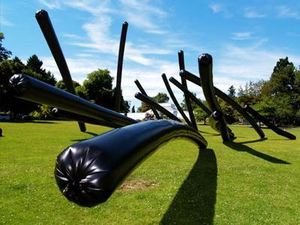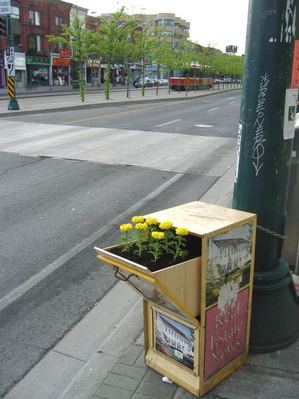Oh, the horror. Judith H. Dobrzynski on her AJ blog, Real Clear Arts, lamented the following: Who’s Looking at Paintings? Not, Apparently, Even Art Students.
Dobrznyski:
This
entry is about art students who won’t go to art museums. Apparently,
some students today think that viewing art online is good enough or
better. That’s what I discovered reading a blog item by Laurie
Fendrich, a painter who lives and works in New York and is a professor
of fine arts at Hofstra University.
Dobrznski didn’t link to the Fendrich story; here it is. (Fendrich doesn’t appear to link to her sources either.)
Fendrich:
Yesterday a colleague who teaches painting emailed me that it’s hard
for him to get his students to go to a museum to look at a work of art.
They just can’t see the point. Why schlep into New York to go to a
museum to see a painting, especially since, as often as not, the
hyper-bright, clean crisp image of it that’s posted on the museum’s Web
site makes the real thing look limp and lame by comparison?
They’re
both missing a salient point understood by the students. A lot of art
today is about the replication of imagery. Its aura, in the Walter Benjamin sense, is not lost in mechanical reproduction. It exists because of mechanical reproduction.
Michael Kimmelman learned this when he asked Cindy Sherman to visit the Met with him in 1996, as part of a NYT portrait series he turned into a book.
She told him she rarely went to the Met. She was in fact surprised that
paintings have a different kind of life in person than they do in
catalogs, where she’s used to seeing them. She claimed not to have
previously noticed this elementary (Watson) fact. She didn’t notice
because she doesn’t need it. That’s not what her work is about.
Sherman To Kimmelman on the history of her medium (art historians, avert your eyes):
I’m illiterate in the historical, classic knowledge of photography, the
stuff teachers attempted to bore into my head, which I resisted. The
way I’ve always tried to cull information from older art and put it
into my work is that I view it all anonymously, on a visceral level.
Lately I’ve been looking at a lot of images from Surrealism and Dada,
but I never remember which ones are the Man Rays, say, because I’m just
looking for what interests me.
Some
artists don’t go to museums until their own work is there, and some,
like Sherman, tend not to go even then. This is neither shocking nor
cause for hand-wringing.
Bruce Barcott on a disgraceful name enshrined in honor at the Seattle Art Museum, in City Arts Seattle:
My daughter and I were strolling through the Seattle Art Museum
recently, enjoying the treasures in the museum’s still-feels-new
expansion wing, when I turned a corner and saw these words: “Kerry
& Linda Killinger Gallery.”I stood there, gobsmacked.
The Killinger Gallery: I’d never noticed it before. Donor names on
gallery walls and theatre seats are so ubiquitous that they rarely
register. But this one popped up as if lit up in Dan Flavin neon. Here
was Seattle’s culpability in the global economic crisis laid bare. Here
was our shame displayed.
Susan Robb: Her Warmth, Giant Black Toobs is in Houston. The able Douglas Britt has the story, here.
 From Blade Diary via Eyeteeth: What to do with abandoned newspaper boxes:
From Blade Diary via Eyeteeth: What to do with abandoned newspaper boxes:
 Finally, Ellsworth Kelly (the dress) from Greg.org and Ellsworth Kelly (the interview) from Kenneth Baker. Ellsworth Kelly now, Ellsworth Kelly forever.
Finally, Ellsworth Kelly (the dress) from Greg.org and Ellsworth Kelly (the interview) from Kenneth Baker. Ellsworth Kelly now, Ellsworth Kelly forever.



I appreciate the links and comments on seeing art through an additional lens — I spent spring break in Paris with a group of middle schoolers and realized that they all were looking at the world through their cameras, clicking madly at everything, and flipping through the images when they were talking with their friends about what they’d seen.
Another moment where I realize I’m from a different generation, one that always thought “that’s 19¢ to develop” whenever we clicked the shutter.